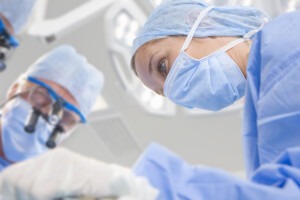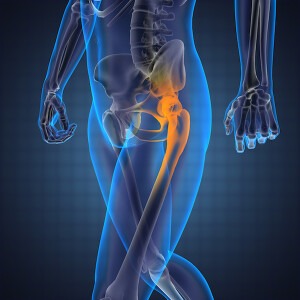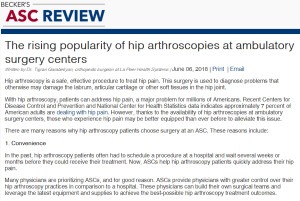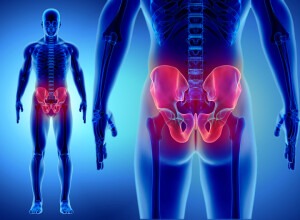According to the data from the American Academy of Orthopaedic Surgeons Annual Meeting in 2014, 70 percent of hip dysplasia patients who received hip arthroscopy orthopedic surgery did not need total hip arthroplasty 5 years after the procedure.
orthopedic surgery did not need total hip arthroplasty 5 years after the procedure.
This data also indicated improved outcome scores, patient satisfaction, and quality of life.
Southern California Hip Institute (SCHI), led by board certified orthopedic surgeon Dr. Tigran Garabekyan, provides hip arthroscopy surgery to patients in North Hollywood, Los Angeles, and surrounding locations.
Labral Tear
A labral tear is a tear in the dense tissue surrounding the hip socket. The labrum provides support to the hip joint. In case a tear occurs, it can lead to a piece of this tissue being pinched and causing pain.
Notably, if the labral tear is a secondary problem while there is an underlying mechanical issue, then merely treating the torn labrum and not addressing the deeper cause behind the tear may only offer short-term relief. It is important to address the problem sustainably.
Sometimes patients with labral tears due to impingement who receive hip arthroscopy do not achieve lasting relief unless the underlying cause of impingement is also treated.
In a hip arthroscopy orthopedic surgery procedure, the surgeon places 2 or 3 tiny incisions. Through these incisions, they will insert small, pencil-thin instruments including an arthroscope, into the joint. The arthroscope has an attached camera lens which magnifies and lights up the interior structure of the joint.
Fiber optics transmits this information to a visual monitor akin to a TV screen. This enables the surgeon to view the joint’s interiors and identify the presence of an injury or abnormality. The surgeon can repair and correct some conditions using these special surgical tools.
Hip arthroscopy is often more complex than shoulder or knee arthroscopy as the hip is situated deep in the muscle layers and other vital structures such as blood vessels and nerves. To enable the surgeon to view the joint properly, the patient is placed on a specialized surgical table.
Then traction is applied to the leg that is being treated to separate the joint slightly. Nerve damage may potentially occur due to this traction, and proper care is taken to prevent this occurrence.
The key benefit of hip arthroscopic surgery is that it is significantly less invasive in solving specific hip issues in comparison to a substantial, open incision.
Advantages
Advantages of hip arthroscopic surgery are:
- Significantly smaller incisions are placed.
- It is usually performed on an outpatient basis.
- It enables faster and accelerated rehabilitation. Depending on the issue being treated, the surgeon may ask the patient not to instruct them to wear a hip brace to restrict hip motion.
- Many patients return to normal activities sooner than if a traditional, open incision procedure is performed.
Arthroscopy might be a viable alternative to a young person seeking to avoid total hip replacement or a similar procedure. It is vital to understand all the risks involved in hip arthroscopy surgery. Reliable orthopedic surgeon Dr. Tigran Garabekyan receives patients from North Hollywood, Los Angeles, and other cities and neighborhoods in this region of the state for hip arthroscopy surgery.
Dr. Tigran Garabekyan is a board certified orthopedic surgeon specializing in hip preservation. To learn more about Southern California Hip Institute or to schedule a consultation, click here to contact us or call:
Century City / Los Angeles: 310.574.0375
Serving patients in Encino, Sherman Oaks, Van Nuys, North Hollywood, Burbank, Glendale, West Hollywood, Century City, Beverly Hills, Santa Monica, Los Angeles, and other neighboring cities in the greater Los Angeles, California area.
Also visit http://www.drgorthopedics.com/


 motion.
motion.  the leg around. This snapping feeling occurs when a tendon or muscle (the strong tissue that connects muscle to bone) moves over a bony protrusion in the hip.
the leg around. This snapping feeling occurs when a tendon or muscle (the strong tissue that connects muscle to bone) moves over a bony protrusion in the hip. irritate the hip, at times down to the knee. The patient may walk with a limp to avoid the pain or abstain from walking at all.
irritate the hip, at times down to the knee. The patient may walk with a limp to avoid the pain or abstain from walking at all. Femoroacetabular impingement (FAI) refers to a condition in which extra bone grows along one or both of the bones that form the hip joint.
Femoroacetabular impingement (FAI) refers to a condition in which extra bone grows along one or both of the bones that form the hip joint. Hip arthroscopy
Hip arthroscopy  Hip arthroscopy is a safe, effective procedure to treat hip pain. This surgery is used to diagnose problems that otherwise may damage the labrum, articular cartilage or other soft tissues in the hip joint.
Hip arthroscopy is a safe, effective procedure to treat hip pain. This surgery is used to diagnose problems that otherwise may damage the labrum, articular cartilage or other soft tissues in the hip joint. A stress fracture in the hip is a severe injury to the ball of the ball-and-socket hip joint. You may relate broken hips only with older people, but stress fractures can occur at any age.
A stress fracture in the hip is a severe injury to the ball of the ball-and-socket hip joint. You may relate broken hips only with older people, but stress fractures can occur at any age.


